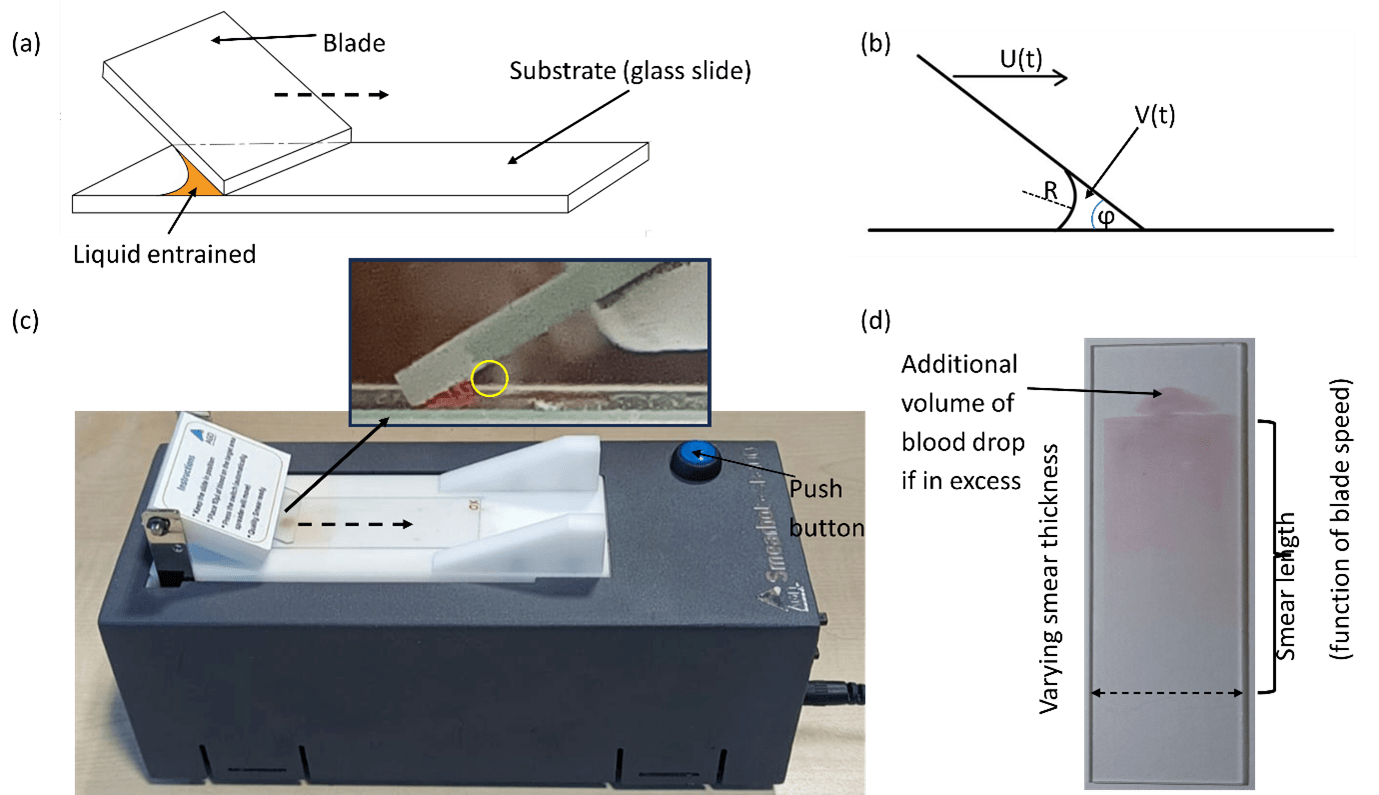A compact and economical smear device for biological samples that can provide uniform films with a large area containing a monolayer of cells has been presented. The device is easily constructed using parts printed on a 3D printer, along with readily available stepper motors, controllers, and shafts. The platform with the blade holder moves relative to the stationary platform that holds the slides. An exact mathematical expression is provided for the blade speed variation to achieve a uniform film. The device can simultaneously smear multiple slides, with each blade positioned at a different angle, enabling the smearing of both low and high viscosity blood samples at the same time. A simple, automatic rotation mechanism of the blade holder at the end of the smear process allows for easy cleaning of the blades before the next smear.
A significant percentage of manually prepared blood smears are of poor quality and unfit for disease identification. Therefore, there is a need to automate this process. Existing automation devices are unsuitable for resource-constrained settings because they are either bulky or complex in design and consequently expensive. Hence, there is a need for a device that is simple in design, easy to use, and straightforward to construct.
- This innovation is an economical, precise and automated blood smear device which eliminates many of the expensive components.
- It establishes an exact relationship between the blade speed, smearing angle, and the properties of the biological sample to achieve the desired smear thickness.
- It provides a formula for varying the blade speed to achieve a uniform film.
- The device is capable of producing a uniform film with a large monolayer area of cells.
- It ensures a uniform spring force on the blade holder, maintaining consistent contact between the blade and the glass slide
- It incorporates an automatic swivel mechanism for the blade holder for easy cleaning.
- It enables the simultaneous smearing of two glass slides with different blade angles
- It allows for adjustment of the smear blade angle.
The glass slides are held in position by a shallow slot etched into the base of the main platform and is held in place by tiny protruding stoppers at one end of the shallow slot. A larger and round depression at the same of end of the platform allows easy placing and removal of the glass slides. A pair of blades are held in place by a blade-holder assembly which swivels about its axle that is attached to moving frame. The blades are preferably made from glass slides by cutting them to a smaller length. The top surface of the blade-holder assembly has two small protrusions along one edge of the assembly that is connect to corresponding protrusions on the underside of the moving frame via compressed spring. The moving frame directly rests on a pair of guiding rods and a central lead screw. The lead screw is connected to the shaft of a stepper motor via a flexible coupler. Two electronic push-buttons are located at one end of the device.
The technology has been licensed and commercialized.
5
The invention has a low-cost and is easy to use. This will make blood testing and other medical diagnostics more affordable and accessible to the public.
It is a biomedical device which can be used for lab tests of any biological fluids. A common use of this device can be for blood testing and other medical diagnostics.
Geography of IP
Type of IP
202221007507
446889

